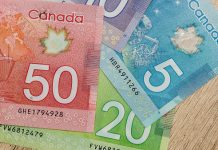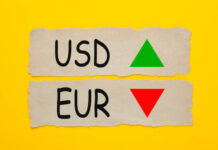Asian equity markets are lower this morning after a torrid day endured by US markets on Friday. The fallout across Asia Pacific has been limited though, as Chinese data released yesterday, showed that Industrial profits in May had rebounded by 6.0%. Although still down by 19.3% year-on-year, the data continues a trend of improvements, lending hope to markets the China is recovering quickly, even as spikes in Covid-19 outbreaks in the United States raise fears its recovery could be derailed.
With China returning from a two-day holiday this morning, the PBOC also announced that it would implement new monetary tools to ensure that liquidity reaches the real economy. South Korea, meanwhile, stated that there would be no additional budgets this year, something likely to weigh on local markets there today.
Hong Kong will be a focus for the region this week. Protests were modest by Hong Kong’s standards over the weekend. But with Beijing set to reveal its final version of the new Hong Kong security bill today, ahead of the Wednesday handover holiday, tensions will remain high. That is likely to weigh on Hong Kong markets this week.
Japan unveiled another disappointing data set this morning. Retail Sales grew by 2.20% in May, but are down 12.30% YoY, suggesting that an economic rebound remains as elusive as ever. Both Japan and South Korea unveil Industrial Production data tomorrow, with both expected to remain firmly anchored in negative territory.
That contrasts to China, where official Manufacturing PMI data tomorrow should remain just in expansionary territory at 50.4. The Caixin Manufacturing PMI data released Wednesday, should confirm the tentative recovery in China remains on track, at a still expansionary 50.5. Wednesday, in fact, sees the release of a swath of PMI data from across the region for June. Further reco0veries from a low base are expected across the Asia-Pacific, with hopes high that China is not a one-trick pony for the region. Disappointing data may add to the sense of gloom weighing on asset markets for now.
With Friday designated a national holiday in the US for Independence Day, the Non-Farm Payrolls have been moved forward to Thursday. Payrolls are expected to grow by 3 million jobs, after last month’s blow-out total of 2.5 million jobs added. Although doubts persist about the accuracy of the data, with equity markets looking wobbly, a decent Non-Farm number is vital to keep the rally afloat. Having climbed into orbit on a combination of vapours, hope and central bank money, equity markets continue to show signs of exhaustion in the near-term. If the Non-Farm Payroll data doesn’t come to the party, the number of guests trying to leave via the single exit door may swell.
Finally, the trajectory of the Covid-19 pandemic in the United States continues to be a primary concern. As the consumer of last resort for the rest of the world for so long, an aggressive double-dip in the US economic recovery, will surely see the rest of the world catch a cold. A global recovery requires both school-yard bullies to be taking the small kids’ lunches, not just one of them.
Equity markets are lower in Asia, but not materially so.
The V-shaped gnomes of Wall Street continued getting a reality check on Friday, with the major indices all having a very poor day at the office. The imposition of dividend and buy-back restrictions by the Federal Reserve saw banking shares take a bath. Meanwhile the advertising ban on Facebook by large corporations, Unilever being the latest, weighed on the social network and big tech in general. The S&P 500 fell 2.43%, the Nasdaq by 2.58%, and the Dow Jones by 3.31%, as reopening’s were rolled back in US Southern and Western states as Covid-19 cases explode there.
Asia has opened lower today, but not materially so. Most exchanges have dropped on their opens but after that have stabilised. Much of this is due to the improving China Industrial Profits data released yesterday. Also helping, was that Asia chose to not fully buy into the volatility displayed by north American markets last week.
The Nikkei 225 has fared worst in the region, after the release of tepid Retail Sales data this morning. The Nikkei 225 has fallen 1.80%. South Korea’s Kospi has fallen 1.40% after the government said there would be no more supplementary budgets.
The trade sensitive Australian markets are also feeling chill winds, with Covid-19 cases climbing again in Victoria, raising concerns about Australia’s recovery. The ASX 200 and All Ordinaries are lower by 1.40%.
Local drivers aside, the picture elsewhere across Asia is far calmer. China has returned to work today with the CSI 300 down 0.70%, and the Shanghai Composite down only 0.50%. The Hang Seng is down 0.90% and is likely to struggle this week, weighed down by politics. Singapore’s STI is down 0.70% with Jakarta and Kuala Lumpur down 0.50%.
Stripping out the negative drivers in individual markets, the falls today across the region will give nervous longs some heart. Much will depend on whether European markets arrive in the same frame of mind this afternoon.
US stocks may get a boost from Boeing of all companies. The 737-Max appears very near to being recertified for flight. I have no idea who Boeing will deliver them to, who will want to fly ion them and which airlines will buy them in the future, but markets these days, never let reality get in the way of a good story.
Currency markets remain in a summer slumber.
Given the fun and games that equity markets were having on Friday, currency markets continue to show a complete disdain to engage in similar behaviour. The US Dollar had a rangebound session versus the wider G-20 on Friday, with the dollar index rising 0.10% to 97.44.
Having escaped the attentions of the FOMO V-shaped recovery crowd initially, the rotation out of US Dollars only began in earnest sometime after the stock market recovery gathered momentum. Over the past week though, the US Dollar has rediscovered some haven driven support as Covid-19 cases spread in the US and elsewhere, and equity markets lost some of their bold confidence.
Although currency markets paused for breath on Friday, the US Dollar does look poised to continued grinding out gains versus the Euro, British Pound, and the commodity currencies. The fall in US yields on Friday likely only postponed the US Dollar bear market correction.
Today in Asia, currency markets are almost unchanged from Friday’s levels. With the regions stock markets holding their own, currency traders are preferring to wait for direction from the arrival of London this afternoon, before dipping their toes back in the waters again.
Oil prices retreat but show resilience.
Oil prices on Friday retreated, but not markedly so. that is in contrast with the heard like behaviour seen in times past, notably when equites have had a very bad day. That suggests that physical demand continues to improve globally, and particularly in Asia. High OPEC+ compliance appears also, to be supportive of energy prices.
Brent crude fell 1.75% to $40.70 a barrel on Friday, with WTI easing 2.25% lower to $38.25 a barrel. Oil prices have fallen again this morning; Brent crude falling 1.25% to $40.20 a barrel, and WTI falling 1.75% to $37.70 a barrel.
that does not mean that oil prices are out of the woods though. Critical support for both contracts lies nearby at $39.80 a barrel for Brent crude, and $37.00 a barrel for WTI. A daily close below these points will signal that a much deeper correction is upon oil markets; potentially taking both contracts back to their 100-day moving averages. These are $37.00 a barrel for Brent crude, and $32.50 a barrel for WTI. The most likely driver being a deteriorating Covid-19 picture in the United States.
Gold remains resolute in the face of downward equity pressure.
Gold prices probed the downside on Friday in lockstep with wilting equity markets, falling 15 Dollars to $1748.00 an ounce at one stage. However, gold shrugged of the selling pressure and reclaimed all of its intraday loses, finishing the session 0.45% higher at $1771.50 an ounce.
Gold’s fortitude will be pleasing for gold bulls, who have watched upward momentum fade after t broke out of its monthly highs at $1765.00 an ounce last week. Gold main supporter is likely US treasury yields, which continued lower on Friday, powered by fears over US economic growth prospects.
With yields on the floor, any dips in gold are likely to find plenty of enthusiastic buyers for now. Only a daily close below $1745.00 an ounce would call this into doubt. Gold has edged slightly higher in Asia to $1773.00 an ounce with initial resistance being last week’s highs at $1780.00 an ounce. Gold still faces formidable multi-year resistance in the $1800.00 an ounce region thereafter though.














